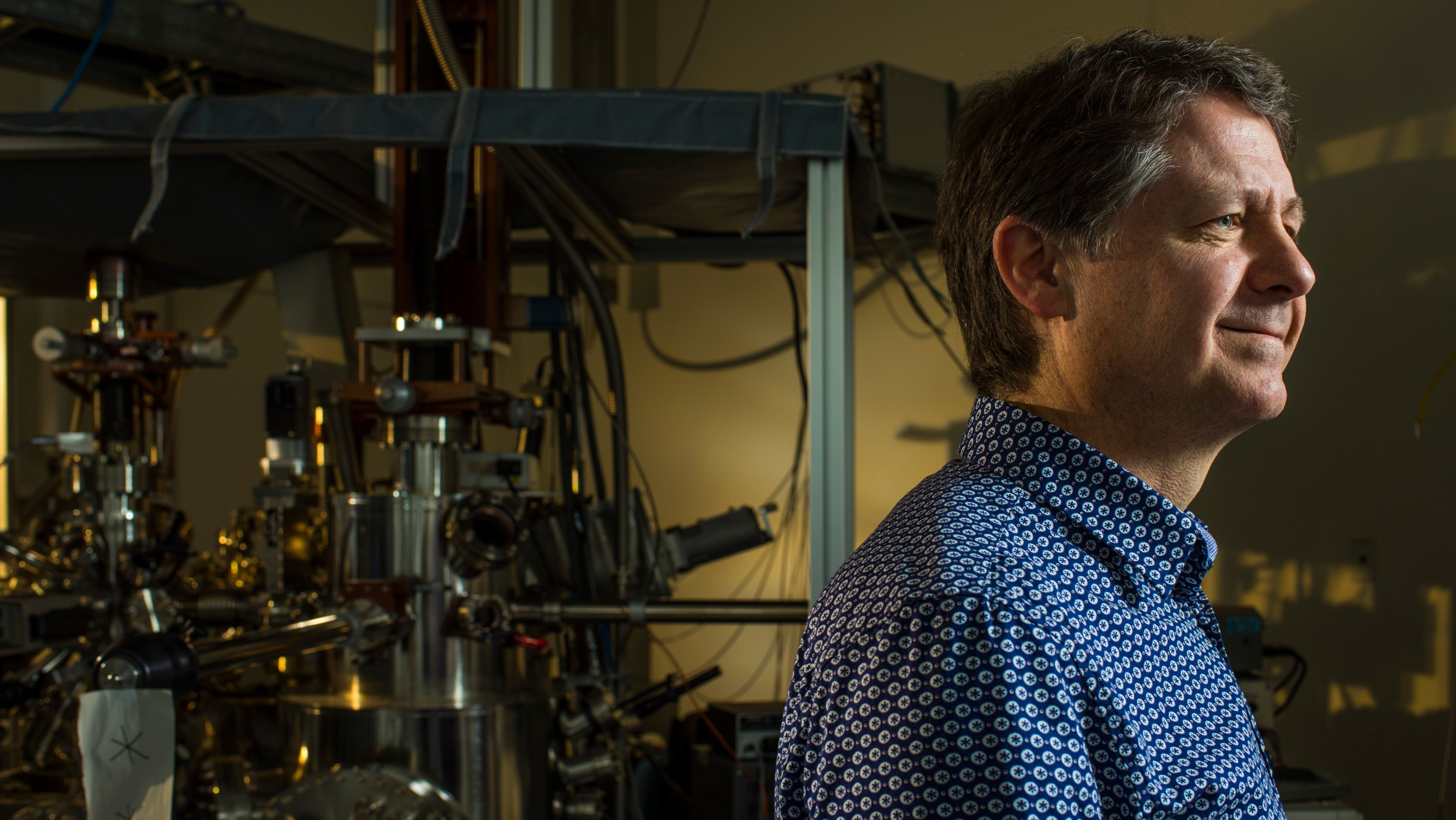The discovery that silicon could be used to make transistors smaller and more efficient in the late 1950s led to the invention of the integrated circuit — the basis for computers, cellphones and just about every other electrical device in use today — and signalled the dawn of the largest, most complex industry history has ever known.
And while North American manufacturers used this homegrown technology to get a head start, today’s $500-billion semiconductor industry has largely moved on.
“The North American semiconductor industry has fallen behind the rest of the world, but I believe Alberta and Canada are now positioned to help the North American industry regain its competitive advantage and its competitive strength,” said Ken Gordon, CEO of the University of Alberta spinoff company Quantum Silicon Inc. (QSi).
Gordon’s optimism comes from a long-standing investment from the provincial and federal government in the work of Robert Wolkow, physics researcher in the U of A’s Faculty of Science and chief technical officer with QSi. Wolkow’s atomic silicon circuitry technology is poised to revolutionize the integrated circuit industry.
Recently, Wolkow, with funding from the federal government’s PrairiesCan and Alberta Innovates along with matching industry support, bought North America’s first atom-scale lithography equipment worth $5 million in an effort to continue the creation of an atomically precise manufacturing centre of excellence at the U of A.
“There’s no reason why we shouldn’t be a world centre for atom-scale manufacturing generally, and specifically for these atom-scale electronics, which will increasingly take over functions that are dominated by today's transistor technology,” he said.
The key to commercializing Wolkow’s atomic silicon circuitry technology is solving the energy-consumption problem faced by the semiconductor.
“This technology has the potential to reduce energy consumption by 100 to 1,000 times,” said Wolkow. “I see this as the ultimate green technology.”
Beyond the limits of today’s technology
In May, IBM announced a breakthrough in semiconductor design and process that holds the promise of using a quarter as much energy as current iterations, improving efficiency in electrical devices from cellphones and laptops to TVs and autonomous vehicles.
Wringing the last bit of efficiency out of 60-year-old integrated circuit technology is welcome news, considering in only a few decades, if rates of electronic increases hold, all the world's current energy production would be needed just to run our electronics.
“There is widespread agreement that there is no room left to improve today’s technology. It’s pretty much at the end of the technology road map,” said Wolkow.
“The world desperately needs a lower-energy electronics platform for remaking everything in an efficient form.”
Wolkow explained the problem with controlling matter at the atomic scale is not only “seeing” at the atomic scale, but moving atoms at the atomic scale.
And though others had developed ways to move atoms more than 20 years ago, they could only move atoms that were very weakly held. Anything made in that way would fall apart above extreme cryogenic conditions.
“It was a great demonstration but it wasn't useful,” he said.
Wolkow’s atom-defined silicon devices are robust — easily withstanding high temperatures. With the inclusion of machine learning advances, QSi has developed the unique tools and the physical processes that allow error-free, automated and scalable atomically precise manufacturing.
“We can do functions that no transistor circuitry can achieve, including quantum things that are out of reach of transistor circuitry,” said Wolkow.
“We are the best in the world at atomically precise manufacturing technology.”
Generating economic value
QSi is just now at the stage of identifying first products and is still only capable of making things of modest complexity, but those things could nevertheless be of high value.
One such product is a quantum random number generator, which Wolkow said is an essential encryption component used in making web communications safe.
“Because this technology uses extremely low power compared with any pre-existing devices, we, for the first time, can make this technology portable and accessible to everyone,” he noted.
The promise of this technology in helping diversify the provincial and national economy has brought in investment from industry and government partners since Wolkow came to the U of A nearly two decades ago.
The physics professor has been afforded the luxury of splitting his time between his U of A laboratory and a cross-campus lab housed within the National Research Council Nanotechnology Research Centre. He also helped build the U of A’s state-of-the-art Nanofabrication Facility.
‘I’ve been able to do things in a university atmosphere that normally couldn’t be done, sustaining very expensive and complex equipment that can’t be maintained with normal levels of support, whether it be financial or personnel,” he said.
